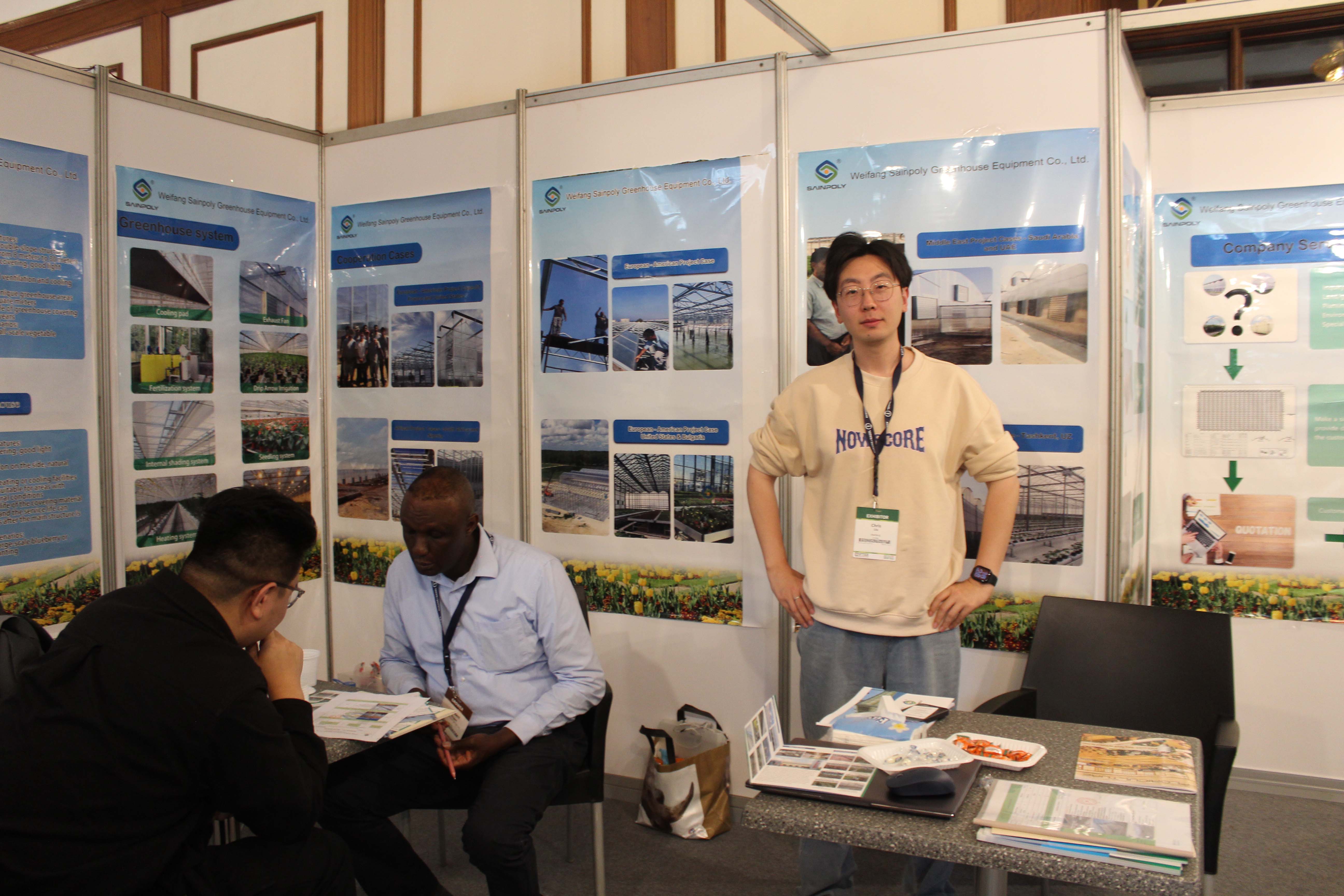
To adapt to climate change and meet evolving market demands, employing technology and designing high-quality greenhouses is vital for optimizing operations.
Well, that is where Weifang Sainpoly Equipment Company Limited comes in. During IFTEX 2025, the Chinese giant showcased their products for
the first time in the expo.
While our decision to enter the Kenyan market is backed by promising numbers, it’s equally driven by the need for accessible and affordable greenhouse solutions,” says Ray Liu of Sainpoly. “It’s about potential, new counties venturing into horticulture, new farmers, and the opportunity to bring affordable Agri-tech to untapped regions.”
Based in Shandong Province, China, Sainpoly Greenhouse operates a 30,000 square-meter factory specializing in the full suite of greenhouse services, from production to farm installation.
“Our company has previously supplied greenhouses to clients in the U.S., Europe, Australia, and even government projects like Qatar’s 2023 World Expo,” he highlights.
As a new entrant in the region, with Kenya marking the company’s first establishment in East Africa, Ray admits that while being in the early exploratory phase, “our strategy is simple, start with cost-effective, manual systems that are accessible to local smallholders and scale up based on feedback and demand.”
In competition with established local manufacturers, Ray says Sainpoly offers high-quality greenhouses at a lower cost than many local providers.
“Our experience with global markets ensures quality, but the pricing is tailored for developing markets like Kenya,” he adds.
By working closely with local contacts and experts who understand the dynamics of the Kenyan market, the company is focusing on emerging horticulture regions such as Homa Bay and Bungoma, counties that are only now embracing commercial farming.
Despite the optimism, Ray acknowledges the obstacles ahead, saying, “We know technology can be expensive, and adoption rates vary. That’s why we’re starting with basic, non-electric systems that focus on durability and ease of use.”
Looking to partner with new agribusiness start-ups to establish early market leadership, Ray says, “With the Kenyan government keen on food security and climate-smart agriculture, the timing may be just right.”
